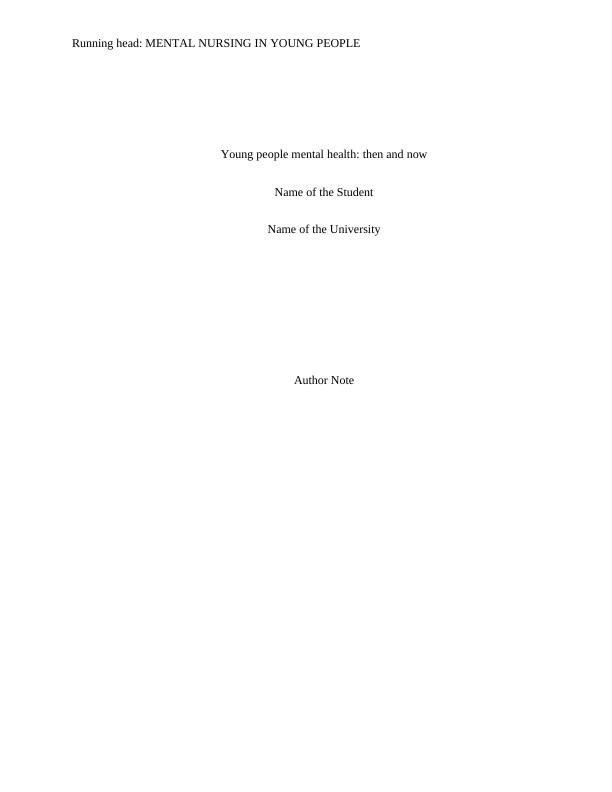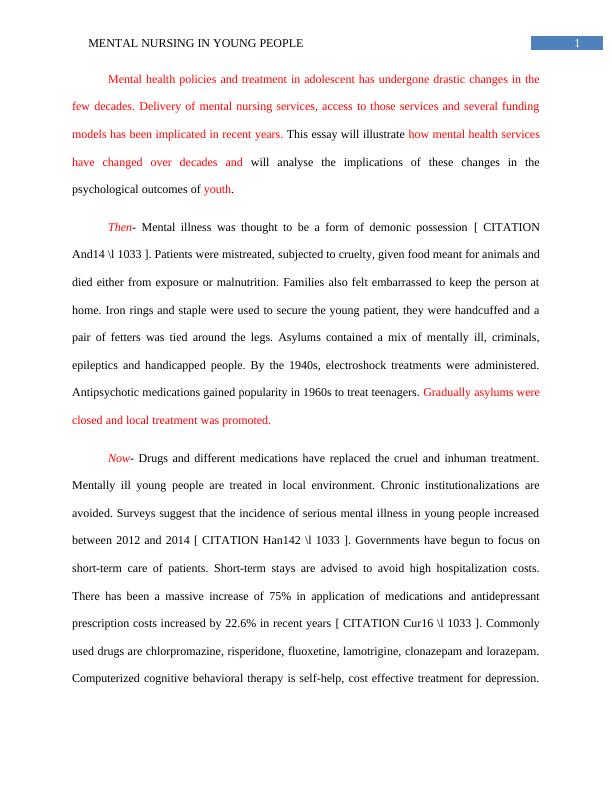NURSING 3004 - Mental Nursing in Young People Essay
7 Pages1860 Words62 Views
The University of Adelaide
Mental Health Nursing (NURSING 3004)
Added on 2020-03-07
About This Document
Mental health policies and treatment in adolescent has undergone drastic changes in the few decades. Delivery of mental nursing services, access to those services and several funding models have been implicated in recent years. This essay will illustrate how mental health services have changed over decades and will analyse the implications of these changes in the psychological outcomes of youth. This essay included - Implications of the medications, drugs and different medications and mental illness.
NURSING 3004 - Mental Nursing in Young People Essay
The University of Adelaide
Mental Health Nursing (NURSING 3004)
Added on 2020-03-07
ShareRelated Documents
End of preview
Want to access all the pages? Upload your documents or become a member.
Essentials of Psychiatric Mental Health Nursing
|12
|3388
|22
Analyzing Mental Health Nursing Needs of School Going Teenagers
|26
|7299
|361
Mental Health Nursing Assignments
|7
|1478
|36
Developing Professional Knowledge and Values in Mental Health Nursing
|12
|4092
|339
Mental Health and Nursing (pdf)
|9
|1616
|62
Cognitive Behavioral Therapy for Depression in Adolescents
|10
|2158
|91



